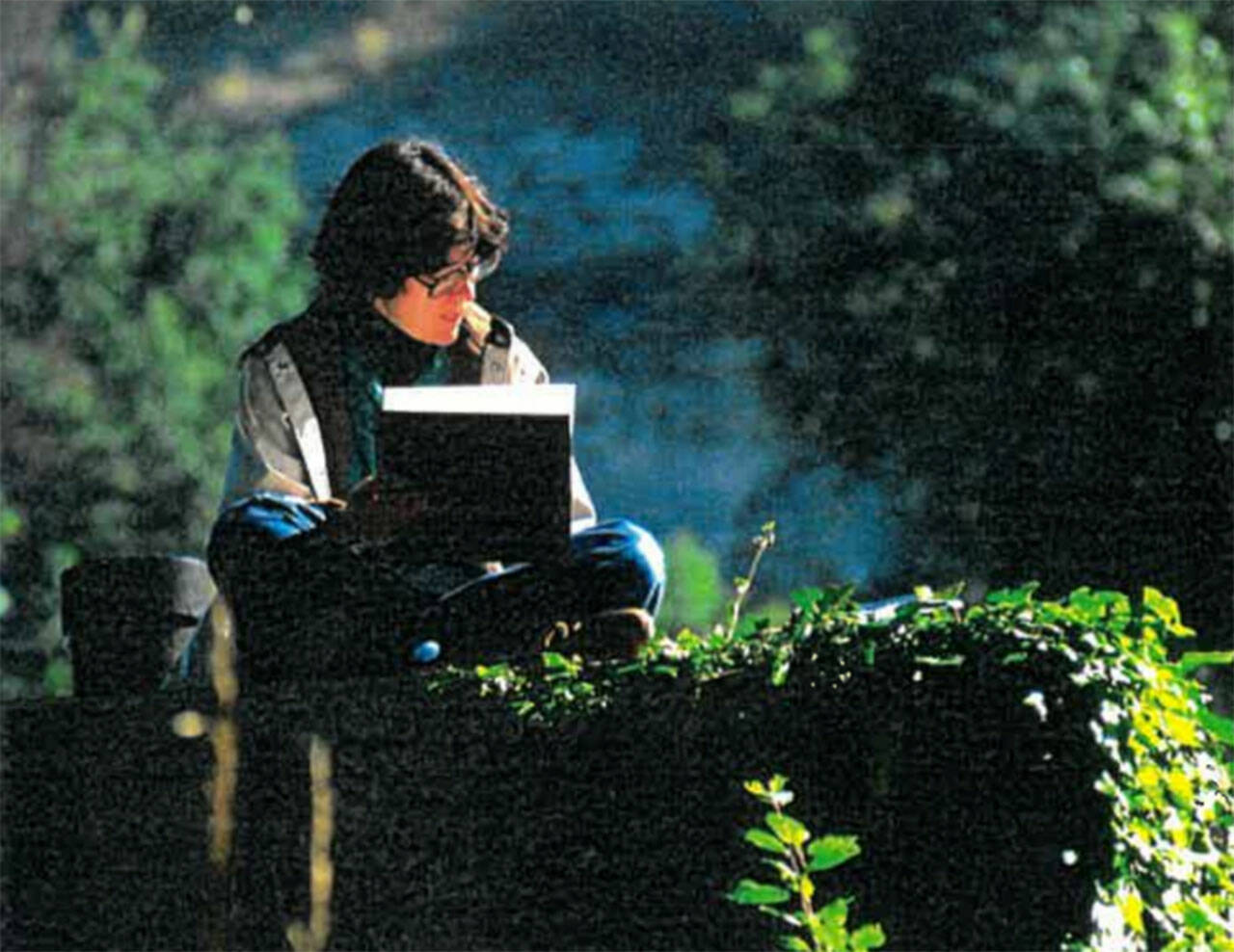Bainbridge Island artist Elizabeth Van Liere passed away in 2020 and some of her artwork, spanning five decades, is being displayed and sold at Realogics Sotheby’s International Realty on Winslow Way through October as part of the Downtown Association’s First Friday Art Walks.
Van Liere was born in Ann Arbor, Mich., in 1940. She attended a laboratory school for the University of Michigan’s School of Education, which was the “beginning of her creative and intellectual life,” according to her biography written by her husband, Eldon Van Liere, who still lives on the island.
Upon graduation, Elizabeth and her mother sailed to France on the Queen Mary and toured Europe for six months. Eldon said that experience had a “major impact on her life.” Afterward, Elizabeth attended Michigan and majored in art and French. One summer, Elizabeth attended an art school in Leland run by in-state rival Michigan State. It turned out to be a blessing in disguise because she ended up meeting Eldon, an art history instructor there. They got married in 1962.
“She always thought she wanted to be an artist,” Eldon said. “She can be very charming, pleasant. When we first met we talked for three hours. She went home and said she met the man she was going to marry.”
Elizabeth and Eldon toured Portugal, Greece, Turkey, Netherlands, Italy and France, which is where they spent the majority of their time. It was the first of 15 trips there. On the trips to Europe, Elizabeth would paint their exploits. Some are displayed at Sotheby’s. During her first trip, she fell in love with the landscape of France, which became a focus of her artwork over the years. She also created art of the places she lived, such as Michigan and Washington.
Elizabeth did other forms of art too, like acrylics, lithographs, drawings, gouache and watercolor. But Eldon said that oil paintings were her favorite.
“I was never in her studio when she was painting,” Eldon revealed. “She would let me in afterward. That was her world. We would talk about her paintings afterward. I recorded everything she did, photographed every painting she did as it came out of the studio.”
With their busy lifestyle, Eldon said they never had children, and “that was our decision.” He mentioned that Elizabeth didn’t want to have children around turpentine, which is used in oil paintings and can cause headaches, dizziness and nausea.
In 2002, they to move from the flatlands of Michigan to Bainbridge Island, surrounded by water, mountains and tall trees.
“She’d never been west of the Mississippi (River),” Eldon said. “We flew to Seattle and fell in love with it quite quickly. We came across and drove around the island a little bit. We went around the Olympic Peninsula. We decided we liked what we saw. We bought a house in three days, and then fixed it up.”
In the midst of her art career, Elizabeth started having reactions to turpentine so she switched to acrylics. Upon their move to Bainbridge, they built a studio with good ventilation so she could go back to oil paintings.
“She is a traditionalist,” Eldon said. “She also was very much aware of the fact that she was a woman in a man’s world. I don’t find anything about her work to be feminine. They’re gutsy, they’re sure. She always knew when to stop. It’s very easy to keep going because you’re into it. She had a wonderful color sense. Painting is made up of countless decisions.”
Elizabeth painted her last painting in 2015 as she could no longer hold up her arm for any length of time. Eldon said she got weaker and quit driving. She was diagnosed with a rare disease called Basal Ganglia Calcification, which happens when calcium builds up in the brain.
As her condition deteriorated, she was placed at the Madrona House, where Eldon would visit her every morning. “She started having memory problems but luckily she was always herself,” he said. “She never lost her identity. I was her anchor. I went to see her every day”
When the COVID-19 pandemic came, it prevented Eldon from seeing his wife daily. Sadly, the last time Eldon saw Elizabeth was through a window at the assisted living facility. She died a few days later. “They shut me out from seeing her,” he said.
Throughout her long career, Elizabeth made about 650 pieces of art. Eldon said he still has close to 100 of them in storage. “It’s not where I want them,” he said. “I want it out in the world if I can get it out there.”
“Beth and I are loners,” Eldon concluded. “We were alone together.”



